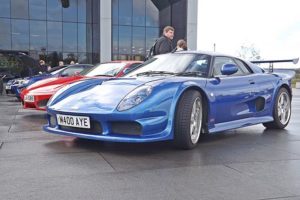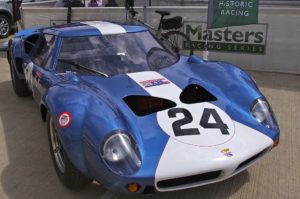The hottest supercars are mid-engined
by: Rex Truman

The hottest supercars are mid-engined: Ferrari F430 image By The359 (Own work) [CC BY-SA 3.0 (http://creativecommons.org/licenses/by-sa/3.0) or GFDL (http://www.gnu.org/copyleft/fdl.html)], via Wikimedia Commons
For ultimate performance, the mid-engined layout is used for supercars – just like it is on racing cars. Typical mid-engined supercars are the Ferrari F430, Lamborghini Murcielago and Noble M400. Mostexotic supercars are also mid-engined.
The mid-engined layout has these advantages over front-engined cars:
There is more weight over the rear wheels, but not too much, so traction is good
Because the driver sits in front of the engine, the car can be lower, reducing frontal area and the center of gravity. That means a higher top speed and better cornering.
Aerodynamics of mid-engined cars are usually the best
Because there is no propeller shaft taking the drive from the front to the back, mid-engined cars are usually lighter than front-engined cars
Those add up to a big advantage in performance. These cars are usually powered by V-type engines, or boxer engines, as these are lower and take up less room than in-line engines.
Gearbox usually behind the rear axle

Mid-Engined Supercars: Lamborghini Murcielago image By Thesupermat (Own work) [CC BY-SA 3.0 (http://creativecommons.org/licenses/by-sa/3.0)], via Wikimedia Commons
To get the power onto the road, the rear tires are wider than the front ones on a mid-engined car – usually about 30% wider. The wider rear tires also make the cars more stable at high speeds.
Used on racing cars first

Mid-Engined Supercars: Noble M400 image By Mark Harkin (DSCF0345) [CC BY 2.0 (http://creativecommons.org/licenses/by/2.0)], via Wikimedia Commons
Lola GT a trend-setter

Mid-Engine Supercar: Lola Mk6 GT image By David Merrett (Flickr: Lola) [CC BY 2.0 (http://creativecommons.org/licenses/by/2.0)], via Wikimedia Commons
What about rear-engined cars like the Porsche 911? Rear-engined cars have the engine behind the rear wheels, so there is a lot of weight on the rear wheels. Also, because the engine sticks out behind, when the car starts to slide, the mass of the engine keeps it going. This is not the best layout, although it makes quite a practical 2+2.
| About The Author
Rex Truman has been writing about fast cars and supercars for many years, and runshttp://www.special-supercars.info/, an informative site about supercars.
|
Article Source: Article City
